Countries worldwide are now rolling out special visas designed for remote workers, making it easier than ever to work while exploring the world.
From European coastal towns to Asian metropolises, the world is truly becoming our workplace, but which countries offer the best balance of affordability, lifestyle, and practicality? Read on to know more!
What Is The Best Country To Live As A Nomad?
Portugal is the most sought-after place for digital nomads in 2025. The main reasons for this are the affordability, exceptional infrastructure, and vibrant nomad community.
The country’s D7 visa and newer Digital Nomad Visa offer clear legal residency, while its Mediterranean climate, stunning beaches, and historic cities create an irresistible package.
With high-speed internet widely available and English commonly spoken, Portugal is undoubtedly the best country to live in as a nomad.

Countries That Offer Digital Nomad Visas
With many countries recognizing the economic benefits of attracting remote workers, there is a huge demand for digital nomad visas.
Here are the top 10 countries offering some of the most accessible and attractive digital nomad visa programs:
| Rank | Country | Continent | Visa Duration |
|---|---|---|---|
| 1 | Portugal | Europe | 1 year (renewable) |
| 2 | Estonia | Europe | 1 year |
| 3 | Croatia | Europe | 1 year (renewable) |
| 4 | Costa Rica | North America | 1 year (renewable) |
| 5 | Thailand | Asia | 10 years |
| 6 | Spain | Europe | 3 years (renewable) |
| 7 | Mexico | North America | 4 years |
| 8 | Indonesia (Bali) | Asia | 5 years |
| 9 | South Africa | Africa | 3 years |
| 10 | Malta | Europe | 1 year (renewable) |
Now, let’s explore the best countries for digital nomads across all continents. I’ve personally visited or lived in many of these locations and gathered insights from fellow nomads to compile this comprehensive list of over 50 nomad-friendly countries.
Nomad Countries In Europe
Europe offers some of the most developed digital nomad ecosystems, with excellent infrastructure, rich culture, and now, increasingly nomad-friendly visa policies.
1. Portugal
Portugal offers the D7 visa and a special Digital Nomad Visa, allowing you to stay up to one year with the possibility of renewal. This visa grants access to Portugal’s healthcare system, banking services, and also potential ways to permanent residency or citizenship.
Cities such as Lisbon and Porto have become digital nomad hotspots, but smaller cities such as Braga and Lagos in the Algarve are worth exploring. The cost of living ranges from €1,500-2,000 per month in Lisbon to €1,200-1,500 in smaller cities.
After living in Portugal, I found the advantages include excellent infrastructure, beautiful weather, safety, and a welcoming local culture. However, challenges such as slow Portuguese bureaucracy, seasonal tourism that drives up prices in summer, and learning the Portuguese language can be frustrating.

2. Estonia
Estonia offers a one-year Digital Nomad Visa and was the first European country to create such a program. To apply for their visa, you must have a stable income (minimum €3,504 monthly), and it also allows you to travel throughout the Schengen Area.
The capital city, Tallinn is a tech hub and has excellent coworking spaces. The cost of living averages €1,500-2,000 monthly. The country’s e-Residency program is perfect for its digital nomad offerings.
Estonia’s advantages include world-class digital infrastructure, English proficiency, and efficient bureaucracy. However, the harsh winters, relatively high cost of living, and distance from major European hubs pose challenges.
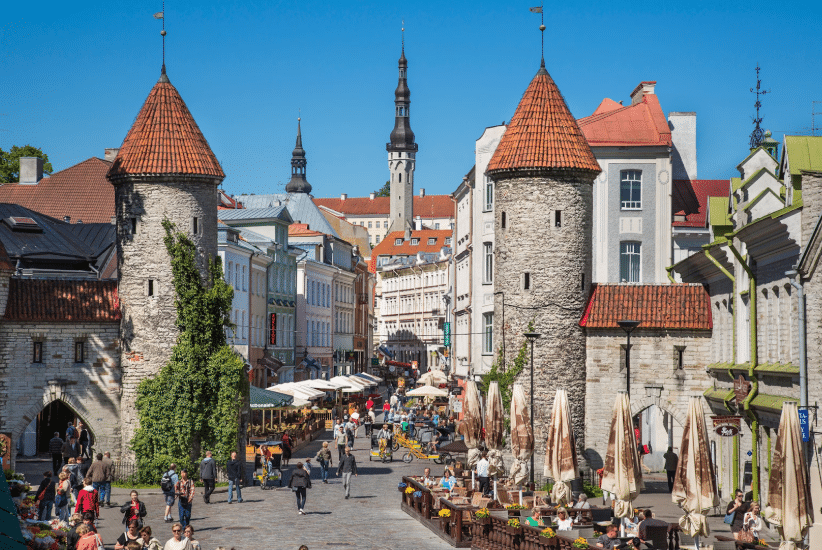
3. Croatia
Croatia’s digital nomad visa allows stays of up to one year without the possibility of immediate renewal (you must leave for six months before reapplying). Income requirements are relatively accessible at €2,300 monthly.
Cities in Croatia such as Split, Dubrovnik, and Zagreb offer distinct experiences from coastal living to urban amenities. Cost of living ranges from €1,200-1,800 monthly depending on location and season.
Split especially has an incredible coastline, affordable living (outside tourist season), and a relaxed Mediterranean lifestyle to die for. The seasonal nature of many coastal towns and limited flight connections during winter months are some of the drawbacks to think about.
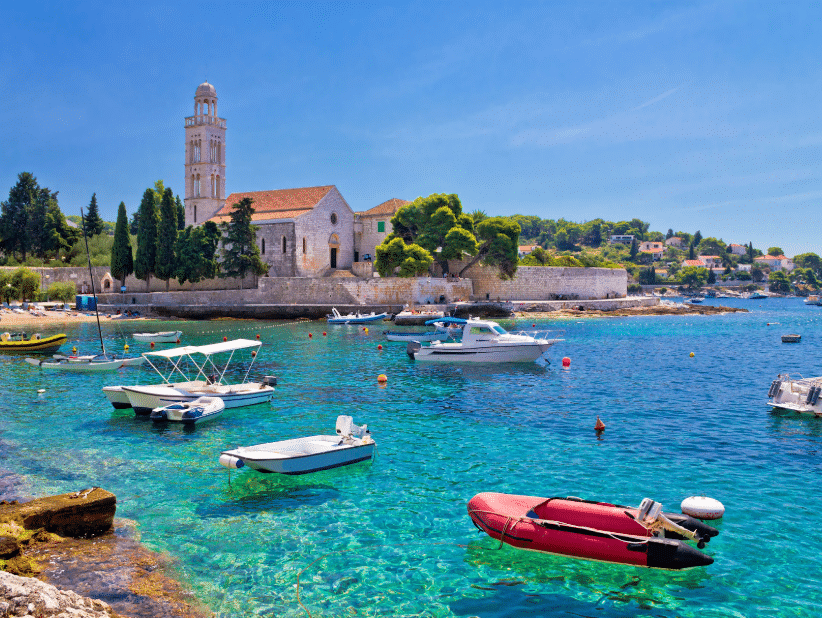
4. Spain
Spain has introduced a digital nomad visa allowing stays of up to three years, which is renewable for additional two-year periods. The visa requires providing a minimum monthly income of approximately €2,000.
Barcelona, Madrid, Valencia, and Seville are popular cities among nomads, while the Canary Islands is yet another city that is also quite attractive. Monthly costs range from €1,800-2,500 in major cities to €1,500-2,000 in smaller locations.
Unlike harsh cold weather in most parts of the world, Spain has excellent weather, a rich culture, and a great transportation infrastructure. However, bureaucracy can be challenging, and summer tourism significantly impacts prices and accommodation availability.

5. Greece
Greece offers a digital nomad visa valid for 12 months, renewable for an additional year, requiring proof of €3,500 monthly income. The most interesting aspect of this visa is it provides a 50% tax break on Greek-sourced income for the first seven years, which makes it an even more viable and attractive option to nomads.
Athens, Thessaloniki, and islands like Crete and Corfu are already nomad hotspots. Cost of living ranges from €1,300-1,800 monthly, varying significantly between the mainland and the islands.
Greece gives you a mix of incredible history, scenic locations, and relatively affordable living. However, internet reliability on some islands and reduced services during the off-season can be challenging.

6. Germany
Germany offers the Freelancer Visa (Freiberufler), which works well for digital nomads and is valid for up to three years, with possibilities for renewal. You typically need to show a monthly income of approximately €1,500 and obtain health insurance.
Berlin, Munich, and Hamburg are popular digital nomad destinations, while smaller cities like Leipzig and Cologne offer more affordable alternatives. Monthly costs range from €1,800-2,500 in major cities to €1,400-1,800 in smaller locations.
Germany provides excellent infrastructure, a central European location, and a strong economy. The challenges include high taxation, bureaucratic processes often conducted exclusively in the German language, and a relatively high cost of living compared to Southern Europe.

7. Czech Republic
The Czech Republic offers a Zivno (trade license) visa, which many digital nomads use. It’s valid for one year initially and renewable for two-year periods. The process requires setting up as a freelancer in the Czech system.
Prague is the most popular among digital nomads, though Brno is also gaining popularity. Monthly living costs average €1,300-1,800 in Prague and €1,000-1,400 in smaller cities.
The Czech Republic offers a central European location, a low cost of living (particularly outside Prague), and excellent public transportation. The trade license application process can be complex, and winter months can be quite cold and dark.

8. Malta
Malta offers a Nomad Residence Permit valid for one year that is renewable. For which you must prove a minimum monthly income of €2,700 and have comprehensive health insurance.
Cities such as Valletta, Sliema, and St. Julian’s are the favorite among nomads. Monthly living costs average €1,800-2,300, with accommodation being the major expense.
Malta offers year-round sunshine, English as an official language, and EU membership benefits. The small island size, tourist crowds in summer, and limited nature access can be drawbacks.

9. Cyprus
Cyprus offers a Digital Nomad Visa valid for one year, that can be extended for another year. A monthly income of €3,500 and comprehensive health insurance are some basic criteria on which you can get this visa.
Limassol, Larnaca, and Paphos attract most digital nomads. Monthly costs range from €1,500-2,200 depending on location and lifestyle.
Cyprus combines a Mediterranean climate with relatively low taxation and a strategic location between Europe, Asia, and Africa. With a booming economy, the housing costs in popular areas have risen significantly, and some regions have less reliable internet are some drawbacks.

10. Iceland
Iceland has introduced a long-term visa option for remote workers valid for six months. For those who demonstrate a monthly income of approximately €7,000 (one of the highest thresholds globally).
Reykjavik is the primary base for digital nomads. Monthly costs are high at €2,800-3,500, making it one of the most expensive nomad destinations.
Iceland offers breathtaking locations, excellent work-life balance, and nearly universal English fluency. The extremely high cost of living, harsh winter conditions, and limited visa duration pose some challenges.

11. Romania
Romania doesn’t offer a specific digital nomad visa yet, but its long-stay visa options and ease of staying as an EU citizen make it popular among nomads.
Bucharest, Cluj-Napoca, and Timișoara have growing digital nomad communities. Monthly costs are very reasonable at €900-1,400 depending on the city.
Romania offers some of Europe’s fastest internet speeds, very affordable living costs, and beautiful, diverse countryside. The administrative bureaucracy, limited international flight connections from smaller cities, and language barriers outside tourism areas can be challenging.
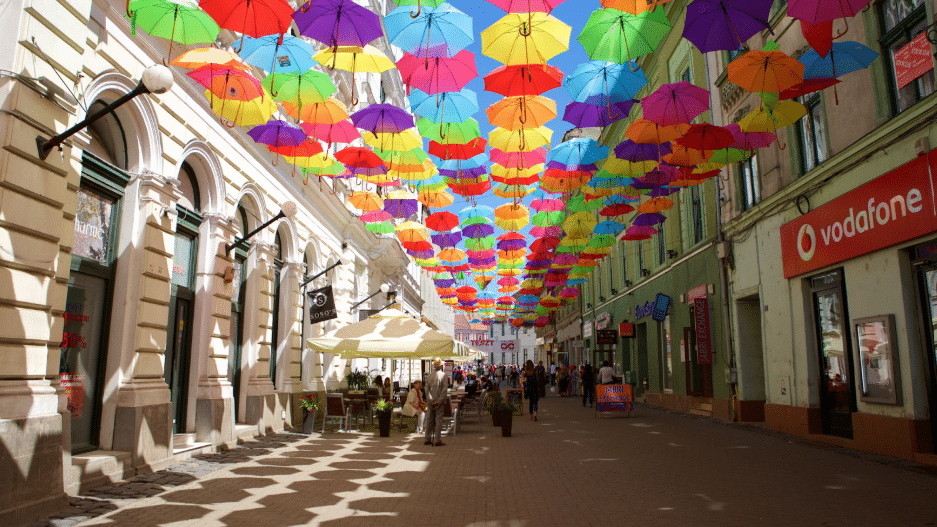
12. Montenegro
Montenegro doesn’t have a specific digital nomad visa yet but offers straightforward residence options and is working on digital nomad programs.
Kotor, Budva, and Podgorica attract different types of nomads. Monthly costs are reasonable at €1,000-1,500 depending on location.
Montenegro offers beautiful coastlines, affordable European living, and permanent residency programs. Internet reliability in smaller towns, limited international flight connections outside summer, and bureaucratic processes mostly conducted in Montenegrin are some downsides.
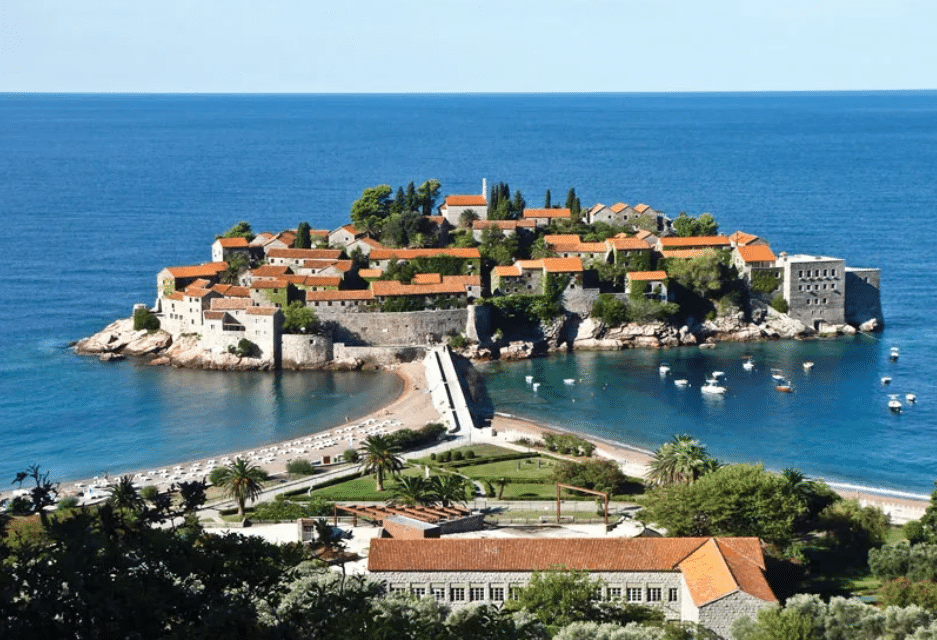
13. Georgia
Georgia offers a “Remotely from Georgia” program allowing digital nomads to stay for up to one year. The income requirement is a reasonable $2,000 monthly.
Tbilisi and Batumi are the main digital nomad centers. Monthly costs are very affordable at $700-1,200, depending on lifestyle.
Georgia offers visa-free access for many nationalities, extremely affordable living, and a unique cultural experience. However, regional tensions, limited international flight connections outside Tbilisi, and language barriers can be problematic.
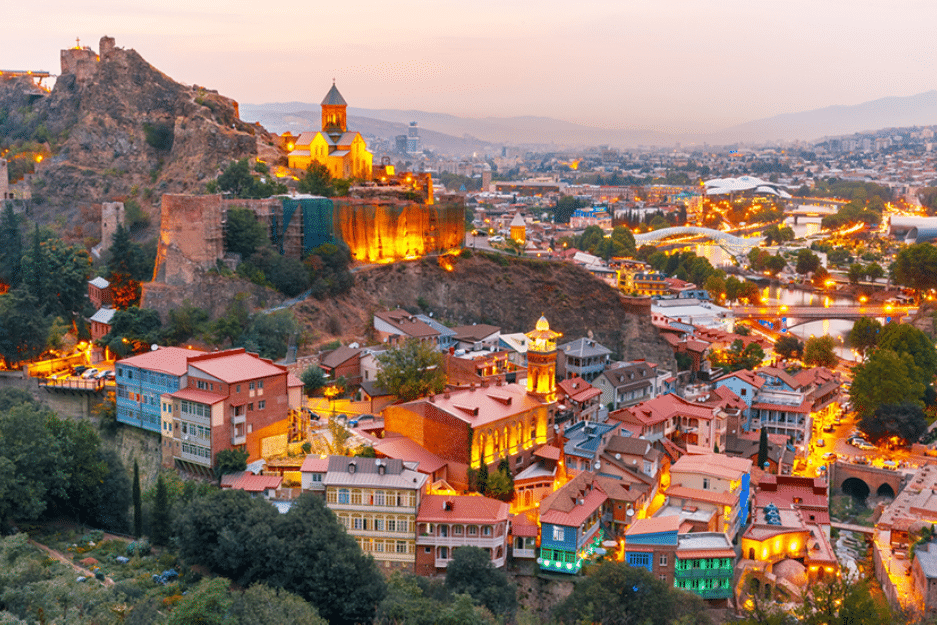
14. Serbia
Serbia offers visa-free access for many nationalities for up to 90 days and is developing longer-term options for digital nomads.
Belgrade dominates the scene, with Novi Sad as an alternative. Monthly costs are very affordable at €800-1,300 depending on lifestyle.
Serbia offers some of Europe’s most affordable living, excellent nightlife, and a central Balkan location. The air quality in winter, limited visa options for stays beyond 90 days, and relatively fewer international connections are considerations.

15. North Macedonia (Europe)
North Macedonia doesn’t have a specific digital nomad visa but offers many residency options and visa-free access for different nationalities.
Skopje and Lake Ohrid attract different types of nomads. Monthly costs are very affordable at €700-1,200 depending on location.
North Macedonia offers extremely affordable European living, beautiful natural settings, and a central Balkan location. Limited coworking infrastructure outside Skopje, language barriers, and fewer international connections are challenges.

Nomad Countries In Asia
Asia offers some of the most affordable and exotic digital nomad destinations with increasingly progressive visa policies.
16. Thailand
Thailand has introduced the new Long-Term Resident Visa (LTR), which includes a digital nomad category offering a remarkable 10-year stay. It requires proof of $80,000 annual income and health insurance.
Bangkok, Chiang Mai, and Phuket have well-established nomad communities. Monthly expenses range from $1,000-1,500 in Chiang Mai to $1,500-2,500 in Bangkok or beach locations.
Thailand combines unbeatable affordability, excellent food, and a friendly culture. Visa runs (before the new LTR visa) and seasonal air quality issues (especially in the north) are some drawbacks that you should keep in mind.

17. Indonesia (Bali)
Indonesia now offers a five-year “second home visa,” requiring proof of approximately $130,000 in an Indonesian bank. Bali specifically has announced plans for a dedicated digital nomad visa.
Canggu, Ubud, and Uluwatu in Bali are digital nomad paradises. Monthly living costs range from $1,000-2,000, depending on lifestyle.
Bali offers spiritual culture, stunning nature, and an established nomad community. However, infrastructure challenges (internet, power outages), visa complexities, and over-tourism in certain areas are some things that need to be considered.

18. Malaysia
Malaysia offers various long-term visa options, including the MM2H (Malaysia My Second Home) program, though specific income requirements have increased recently.
Kuala Lumpur and Penang are the most popular digital nomad destinations. Monthly costs average $1,200-1,800 in KL and slightly less in Penang.
Malaysia provides excellent value, modern infrastructure, and cultural diversity. The increasingly strict visa requirements and seasonal haze from agricultural burning are notable downsides.

19. Taiwan
Taiwan offers the Employment Gold Card, which includes a remote work option for stays up to three years. Income requirements vary by profession but typically start around $5,500 monthly.
Taipei and Kaohsiung offer different urban experiences for nomads. Monthly costs range from $1,500-2,200 in Taipei and $1,200-1,800 in smaller cities.
Taiwan combines safety, excellent healthcare, and amazing food culture. Housing costs in Taipei and limited long-term visa options for nomads without specialized skills may act as hindrances.

20. Vietnam
Vietnam offers e-visas for up to 90 days, though there’s no specific digital nomad visa yet. Multiple entry visas and visa runs are common solutions for longer stays.
Ho Chi Minh City, Hanoi, and Da Nang cities some of Vietnam’s nomad hotspots. Monthly expenses average $800-1,500 depending on location and lifestyle.
Vietnam’s incredible affordability, dynamic culture, and amazing cuisine make it unmissable to nomads. However, air pollution in major cities and complex bureaucracy for longer stays are some cons to look for.

21. Singapore
Singapore offers various work visas including the new Tech. Pass is aimed at tech entrepreneurs and experts, though costs and requirements are higher than typical nomad visas.
Singapore city is the only option, with different neighborhoods offering varying atmospheres. Monthly costs are high at $2,800-4,000, comparable to major Western cities.
Singapore provides world-class infrastructure, exceptional safety, and a strategic location in Asia. The extremely high cost of living and strict regulations on many aspects of daily life are significant considerations.

22. Japan
Japan doesn’t offer a specific digital nomad visa, but its tourist visa and potential work visa pathways make it accessible for shorter-term stays.
Tokyo, Osaka, and Kyoto are the main hubs, with Fukuoka emerging as a digital nomad favorite. Monthly costs range from $2,000-3,000 in Tokyo to $1,500-2,500 in other cities.
Japan combines fascinating culture, excellent infrastructure, and exceptional safety. Language barriers, high costs in major cities, and limited long-term visa options for remote workers create challenges.

23. South Korea
Although South Korea offers limited options for digital nomads primarily, its tourist visa and specific work visa categories might apply to certain professionals making it a considerable option for some nomads.
Seoul dominates the scene, with Busan offering a more laid-back alternative. Monthly costs average $1,800-2,500 in Seoul and $1,400-2,000 in other cities.
South Korea is well-known for its incredible technology infrastructure, efficient public transportation, and vibrant urban culture. A few aspects such as language barrier, difficulty securing long-term visas, and work-focused culture can be some notable drawbacks.

24. Cambodia
Cambodia offers easy-to-obtain business visas that can be extended indefinitely, making it popular for longer-term digital nomads.
Phnom Penh and Siem Reap are the main digital nomad centers. Monthly costs are very low at $800-1,300 depending on lifestyle.
Cambodia offers extremely affordable living, relaxed visa policies, and an entrepreneurial atmosphere. Internet reliability, urban infrastructure challenges, and limited healthcare facilities need to be considered before making a decision.

25. Philippines
The Philippines has announced plans for a digital nomad visa, though, currently most remote workers use tourist visas with extensions.
Manila, Cebu, and emerging destinations like Siargao attract different types of nomads. Monthly costs range from $1,000-1,800 depending on location and lifestyle.
The Philippines offers English proficiency, beautiful natural settings, and a very friendly culture. Internet reliability outside major centers, transportation infrastructure, and typhoon season considerations are some of the drawbacks.

26. Armenia
Armenia offers an easy path to residency and is developing specific options for digital nomads.
Yerevan is the center for digital nomads. Monthly costs are very affordable at $700-1,200 depending on lifestyle.
Armenia offers a rich history, extremely affordable living, and a growing digital infrastructure. Regional geopolitical tensions, limited international connections, and challenging winter conditions are some drawbacks.

Nomad Countries In North America
Let’s explore what are the major cities in North America which could be your next nomad destination.
27. Costa Rica
Costa Rica’s Rentista visa serves as a digital nomad option, allowing stays of up to two years with renewal possibilities. Income requirements are $2,500 monthly.
San José, Puerto Viejo, and Santa Teresa attract different types of remote workers. Monthly living costs range from $1,500-2,500 depending on location.
Costa Rica offers stunning biodiversity, political stability, and a commitment to sustainability. Higher costs compared to neighboring countries and seasonal tourism impacts are considerations.

28. Mexico
Mexico offers a Temporary Resident Visa valid for up to four years, with financial requirements around $2,000 monthly income or $30,000 in savings.
Mexico City, Playa del Carmen, Puerto Vallarta, and Oaxaca have thriving nomad scenes. Monthly costs range from $1,000-1,800 depending on location and lifestyle.
Having lived in Mexico for eight months, I found the advantages include proximity to the US, affordability, rich culture, and scenic localities. Security concerns in certain regions and air quality issues in some cities are some of the notable challenges.
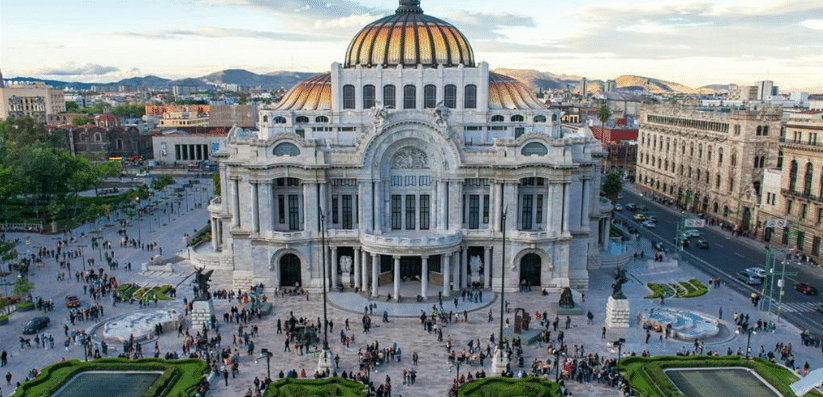
29. Colombia
Colombia offers various visa options including the Migrant Visa (M) with different categories applicable to remote workers, valid for up to three years.
Medellín, Bogotá, and Cartagena each offer unique experiences. Monthly expenses average $1,000-1,500 in Medellín and slightly more in Bogotá.
Colombia combines affordability, pleasant weather (especially in Medellín), and warm culture. Lingering safety perceptions and limited English proficiency outside tourist areas can be challenging.

30. Panama
Panama offers the Friendly Nations Visa which works well for digital nomads from many countries, providing a path to permanent residency after just five years.
Panama City is the most popular, with Boquete attracting those seeking cooler climates. Monthly costs range from $1,500-2,200 in Panama City to $1,200-1,800 in other areas.
Panama offers a dollar-based economy, an excellent banking system, and tax advantages for foreign income. The tropical climate (very hot and humid), developing infrastructure outside the capital, and relatively high costs compared to neighboring countries are a few challenges.

31. Canada
Canada offers various work permits including the Working Holiday Visa for eligible nationalities, though there is no specific digital nomad program yet.
Vancouver, Toronto, and Montreal are the main nomad hubs, with smaller cities like Halifax and Victoria gaining popularity. Monthly costs are high at $2,200-3,000 in major cities.
With many relatives of mine, staying in Canada, it promises great quality of life, safety, and natural beauty. The high cost of living, harsh winters in most regions, and limited specific pathways for digital nomads are some drawbacks.

32. Barbados
Barbados offers the “Welcome Stamp” visa allowing digital nomads to stay for up to 12 months, with possible extensions. Income requirements are relatively high at $50,000 annually.
Primary locations include Bridgetown, Oistins, and the west coast beaches. Monthly costs are relatively high at $2,000-3,000.
Barbados offers beautiful beaches, excellent internet infrastructure, and English as the native language. The high cost of living, hurricane risk during certain seasons, and small island size are things to consider.
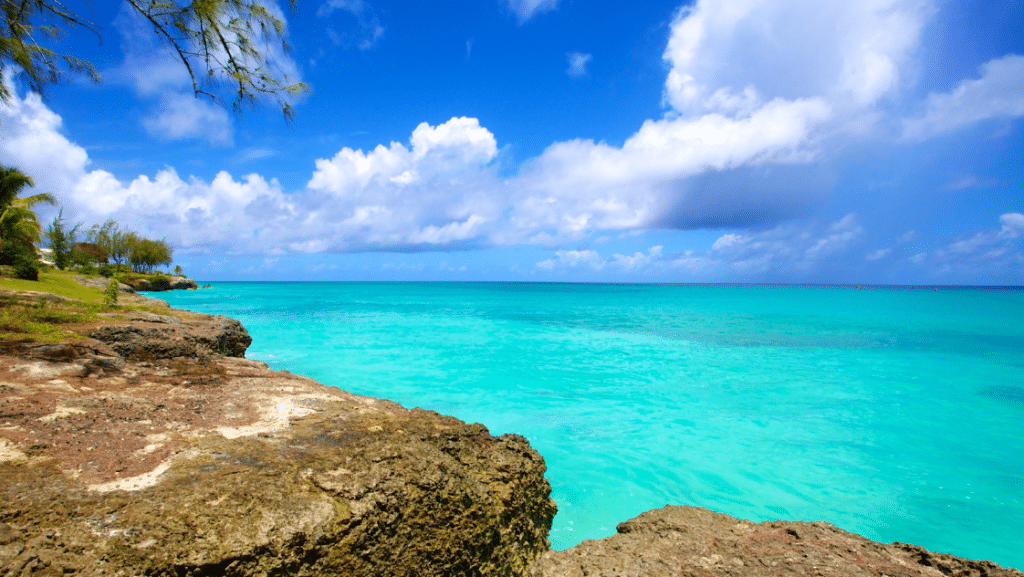
33. Bermuda
Bermuda offers a “Work From Bermuda” certificate valid for one year that is renewable. Income requirements focus on self-sufficiency rather than specific amounts.
Hamilton is the center for digital nomads. Monthly costs are very high at $3,000-4,500, making it one of the most expensive nomad destinations.
Bermuda offers pristine beaches, excellent infrastructure, and proximity to the US East Coast. The extremely high cost of living, small size, and hurricane risk during certain months impose restrictions.
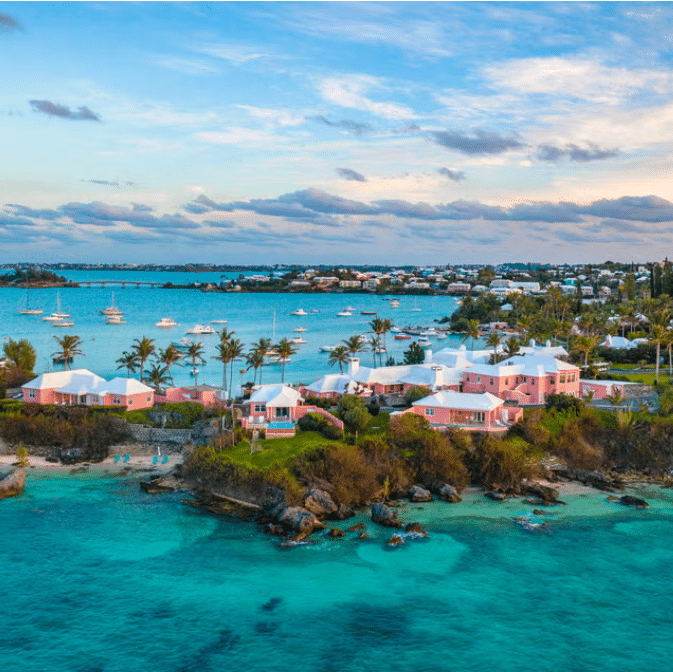
Nomad Countries In South America
That’s not it, South America also has some great options to explore. Here are some of the cities that are quite popular.
34. Uruguay
Uruguay offers various residency options that work well for digital nomads, with relatively straightforward pathways to permanent residency.
Montevideo and Punta del Este are the main nomad destinations. Monthly costs average $1,500-2,200 depending on location and season.
Uruguay provides political stability, good healthcare, and progressive social policies. The relatively high cost of living in South America and somewhat slower internet speeds outside major cities can be daunting.
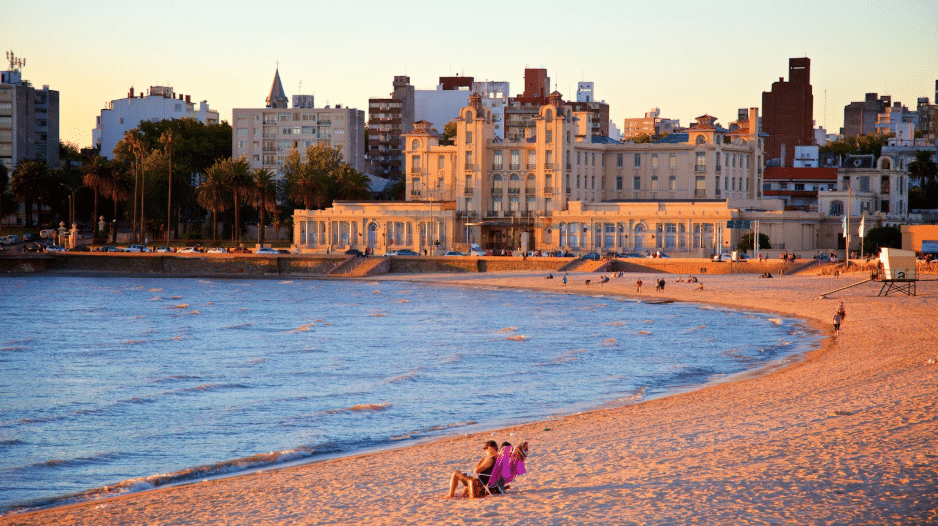
35. Argentina
Argentina doesn’t have a specific digital nomad visa but offers various residency options and is known for relatively easy visa extensions.
Buenos Aires is the most sought-after digital nomad capital, with Mendoza and Córdoba are other great alternatives. Monthly costs fluctuate with the economic situation but generally range from $800-1,500.
Argentina offers European-feeling cities, a distinct culture, and excellent food and wine at reasonable prices. Economic instability, inflation, and currency complications can pose a problem.

36. Chile
Chile offers various visa options that can work for digital nomads, with no specific nomad visa yet.
Santiago, Valparaíso, and Pucón attract different types of remote workers. Monthly costs range from $1,400-2,000 in Santiago to $1,100-1,700 in other regions.
Chile provides political stability, excellent infrastructure, and diverse spaces. The relatively high cost of living, significant earthquake risk, and distance from other countries can be some notable considerations.

37. Brazil
Brazil has announced plans for a digital nomad visa, though details are still yet to be announced. Currently, tourist visas and standard residency options are used by nomads.
Rio de Janeiro, São Paulo, and Florianópolis are popular digital nomad destinations. Monthly costs range from $1,200-2,000 depending on city and lifestyle.
Brazil offers vibrant culture, beautiful beaches, and warm social atmosphere. Safety concerns in certain areas, language barriers (Portuguese rather than Spanish), and bureaucratic complexity are certain drawbacks.

38. Ecuador
Ecuador offers various accessible residency options including investment-based visas with relatively low thresholds.
Quito, Cuenca, and coastal Manta attract different nomad communities. Monthly costs are quite affordable at $900-1,500 depending on location.
Ecuador offers the use of the US dollar, diverse environments from the Andean highlands to the Amazon jungle, and very affordable living. Altitude adjustment in major cities (Quito is at 9,350 feet), internet reliability in smaller towns, and petty crime in tourist areas are some downsides.

39. Paraguay
Paraguay offers one of the easiest permanent residency programs, requiring only a modest bank deposit.
Asunción is the primary base for digital nomads. Monthly costs are very affordable at $700-1,200 depending on lifestyle.
Paraguay offers some of South America’s most straightforward paths to residency and second citizenship, very affordable living, and a central South American location. Limited English proficiency, fewer traditional tourist attractions, and less-developed digital infrastructure pose a challenge.

Nomad Countries In Africa
Africa is also an emerging location for digital nomads looking for unique experiences and affordable living.
40. South Africa
South Africa has introduced a remote working visa valid for up to three years. Income requirements are approximately $3,000 monthly.
Cape Town is the famous digital nomad capital of Africa, while Johannesburg offers a more business-focused environment. Monthly costs range from $1,200-2,000 depending on lifestyle.
South Africa offers incredible natural beauty, affordability, and well-developed infrastructure in major cities. However, security concerns, power outages, and political instability are some critical issues.

41. Morocco
Morocco offers various tourist visa extensions and residency options, with no specific digital nomad visa yet.
Marrakech, Casablanca, and emerging hotspot Taghazout attract different types of nomads. Monthly costs range from $1,000-1,800 depending on location and lifestyle.
Morocco’s advantages include affordability, exotic culture, and proximity to Europe. Internet reliability outside major cities and cultural adjustment for Western nomads can be difficult to handle.

42. Mauritius
Mauritius offers a Premium Visa allowing digital nomads to stay for up to one year. The income requirement is a reasonable $1,500 monthly.
Grand Baie and Port Louis are the main centers for digital nomads. Monthly costs average $1,300-2,000 depending on lifestyle.
Mauritius offers incredible beaches, political stability, and a strategic time zone between Asia and Europe. Limited flight connections, seasonal cyclones, and relatively small size can be some of the limitations.

43. Cape Verde
Cape Verde has introduced a remote working program called “Cabo Verde Digital Nomads” valid for six months that is extendable.
Sal, Santiago, and São Vicente islands attract different types of nomads. Monthly costs average $1,100-1,700 depending on location and lifestyle.
Cape Verde offers a unique African-Portuguese culture, year-round warm weather, and beautiful beaches. Limited infrastructure on some islands, occasional water and electricity issues, and limited flight connections can be overwhelming.
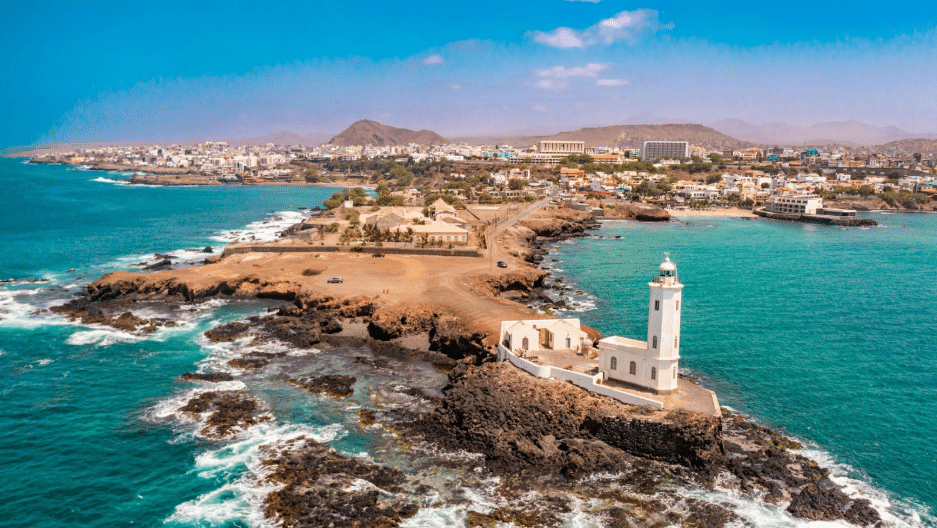
44. Namibia
Namibia doesn’t offer a specific digital nomad visa but has various business visa options that can accommodate remote workers.
Windhoek serves as the base for most digital nomads. Monthly costs average $1,000-1,600 depending on lifestyle.
Namibia has breathtaking surroundings, political stability, and English as an official language. Internet reliability outside major centers, limited coworking infrastructure, and distance between destinations are some downsides.

45. Seychelles
Seychelles introduced a “Workcation Retreat Program” allowing stays of up to one year for remote workers.
Mahé Island hosts most digital nomads. Monthly costs are relatively high at $2,000-3,000 due to the island’s nature.
Seychelles offers pristine beaches, excellent safety, and a stable political environment. The high cost of living, limited internet infrastructure on smaller islands, and distance from major hubs can be daunting.

Oceania
Oceania provides developed infrastructure but typically has higher costs than other regions. Here are some exciting options to explore.
46. Australia
Australia offers various work holiday visas for eligible nationalities (age restrictions apply) and skilled visas that may suit certain digital professionals.
Melbourne, Sydney, and Brisbane are popular, with emerging nomad trends in smaller coastal towns. Monthly costs range from $2,500-3,500 in major cities.
Australia offers an excellent quality of life, stunning nature, and developed infrastructure. The high cost of living and limited long-term visa options for most nationalities are some limitations.

47. New Zealand
New Zealand has working holiday visas for eligible nationalities and skilled visa structures that may work for certain remote professionals.
Auckland, Wellington, and Queenstown attract different types of remote workers. Monthly costs range from $2,300-3,200 depending on location.
My childhood friend who works remotely settled in New Zealand due to the breathtaking environment, safety, and high quality of life. Distance from major global hubs, high cost of living, and limited specific nomad visa options are some drawbacks.

48. Fiji
Fiji doesn’t have a specific digital nomad visa but offers various long-term visa options and is developing more remote work programs.
Suva and Nadi serve as bases for most digital nomads. Monthly costs average $1,500-2,500 depending on lifestyle and location.
Fiji offers incredible natural beauty, friendly locals, and a relaxed pace of life. Internet reliability outside major centers, limited coworking spaces, and isolation from major global hubs can make you feel overwhelmed.

49. French Polynesia
French Polynesia (Tahiti) offers a “Long Stay” visa that can work for digital nomads, valid for up to one year.
Tahiti, Moorea, and Bora Bora attract different types of nomads (with varying budgets). Monthly costs are high at $2,500-4,000 depending on Island and lifestyle.
French Polynesia offers unparalleled natural beauty, excellent security, and a unique blend of French and Polynesian cultures. The extremely high cost of living, limited internet infrastructure on outer islands, and very long distances from other countries are significant challenges.

Nomad Countries In The Middle East
Middle East cities provide some fantastic remote working opportunities which are hard to miss.
50. United Arab Emirates (Dubai)
We all know Dubai is one of the top nomad destinations that attracts people from all over the world. It has a one-year digital nomad visa that can be renewed for additional years. Income requirements are relatively high at $5,000 monthly.
Dubai is the primary location, with Abu Dhabi as a quieter alternative. Monthly costs range from $2,000-3,500 depending on lifestyle.
Dubai offers tax advantages, excellent infrastructure, global connectivity, and year-round sunshine. The high cost of living, extreme summer heat, and more conservative social regulations compared to Western countries are some notable considerations.

51. Bahrain
Bahrain offers various self-sponsored residency options that work well for digital nomads.
Manama is the center for digital nomads. Monthly costs average $1,700-2,500 depending on lifestyle.
Bahrain offers a more relaxed social atmosphere than some Gulf neighbors, excellent internet infrastructure, and a strategic location. The very hot summer climate, relatively small size, and higher living costs compared to some other regions are the limitations.

52. Oman
Oman doesn’t offer a specific digital nomad visa but has various residency options that can work for some remote workers.
Muscat is the primary base for digital nomads. Monthly costs average $1,500-2,300 depending on lifestyle.
Oman offers stunning nature, a genuine Arabic culture, and excellent safety. Limited coworking infrastructure, challenging visa processes for longer stays, and conservative social regulations are the drawbacks.
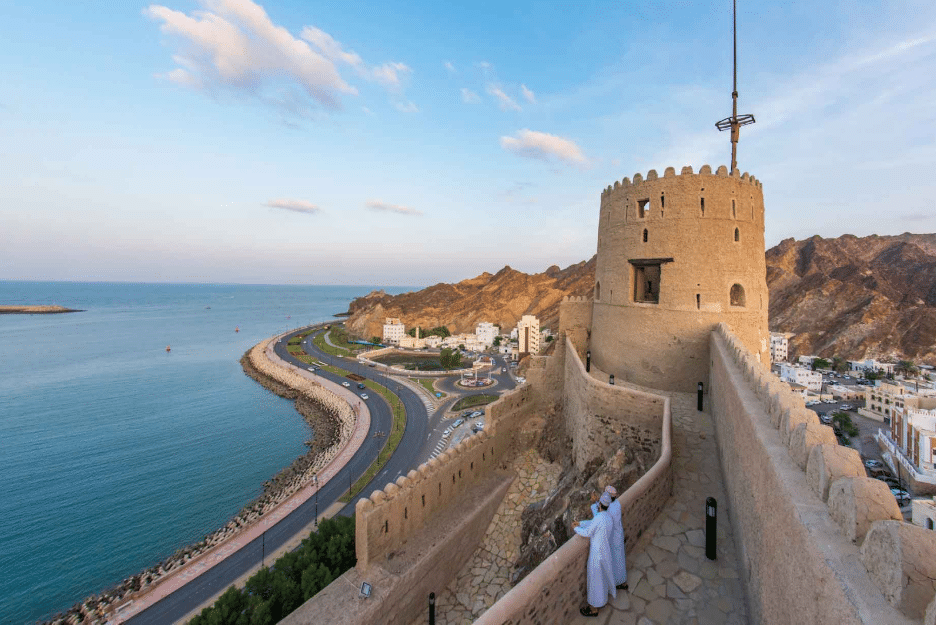
Digital Nomad Visa With Family
Several countries have created family-friendly digital nomad visa programs, recognizing that many remote workers have partners and children:
- Croatia: Allows family members to join the primary visa holder without needing to meet additional income requirements, offering access to public services including education.
- Portugal: Family members can be included in the digital nomad visa application, with an additional income requirement of approximately €700 per dependent. Children gain access to the public education system.
- Estonia: Offers family inclusion with additional income requirements of approximately €500 per family member. The visa includes access to Estonia’s excellent public education system.
- Spain: Allows family reunification under its digital nomad visa with additional financial requirements. Family members receive full access to public healthcare and education.
- Costa Rica: Requires an additional $1,000 monthly income per dependent family member, but provides comprehensive inclusion in the visa program with access to healthcare.
Digital Nomad Visa Requirements
While specific requirements vary by country, most digital nomad visas share common criteria:
- Proof of remote employment or business ownership
- Minimum monthly income (typically $2,000- 5,000)
- Health insurance with international coverage
- Clean criminal record/background check
- Valid passport (typically with 6+ months validity)
- Application fee (ranging from $100-500)
- Proof of accommodation in some cases
- Tax compliance documentation
Factors To Consider When Choosing A Nomad-Friendly Country
When selecting your next base, consider these critical factors:
- Cost of living: How far will your income stretch? Consider accommodation, food, transportation, and healthcare costs.
- Internet reliability: Research average speeds, availability of coworking spaces, and backup options.
- Visa flexibility: How long can you stay legally? What are the renewal processes?
- Healthcare quality: Accessible and quality healthcare becomes increasingly important the longer you stay.
- Safety: Research general safety and specific concerns for your demographic.
- Community: A strong existing nomad community can significantly improve your experience.
- Timezone compatibility: Consider how your working hours will align with clients or colleagues.
- Language barriers: How widely is English spoken? Will you need to learn the local language?
- Banking and finances: Consider the ease of opening accounts and managing money.
Steps To Apply For A Digital Nomad Visa Online
The application process typically follows these steps:
- Research eligibility requirements: Verify you meet the income, employment, and other requirements for your chosen country.
- Gather documentation: Prepare proof of income, employment/business ownership, health insurance, and other required documents.
- Complete the application: Most countries now offer online application portals.
- Pay application fees: Fees vary widely from under $100 to several hundred dollars.
- Schedule appointments: Some countries require in-person appointments at consulates.
- Await approval: Processing times range from a few weeks to several months.
- Finalize in-country requirements: Some countries require additional steps after arrival.
Always check official government websites for the most current information, as requirements frequently change.
Tips For Aspiring Digital Nomads
After years on the road, here are my most valuable lessons:
- Test before you commit: Start with a 1-3 month stay before making longer commitments.
- Build financial resilience: Maintain 6+ months of emergency funds and diversify income sources.
- Invest in good health insurance: International coverage is essential; consider options like SafetyWing or World Nomads.
- Create community quickly: Use platforms like Nomad List, Facebook groups, and coworking spaces to connect.
- Establish work boundaries: Set clear working hours to avoid the “always working, never experiencing” trap.
- Travel slower: Spending at least a month in each location provides deeper experiences and reduces stress.
- Manage digital security: Use VPNs, password managers, and backup solutions to protect your digital life.
- Learn local basics: Even basic language skills and cultural understanding significantly improve your experience.
Suggested Reads:
Conclusion: Portugal Is The Best Country For A Nomad
Portugal earns the top spot for digital nomads in 2025 with its perfect blend of European quality of life, reasonable costs, excellent infrastructure, and easy visa procedure.
Estonia follows closely with its digital-first approach to governance, while Thailand rounds out the top three with its unbeatable combination of affordability and quality of life (especially with its new 10-year visa).
With so many options to choose from, now is the perfect time to take the leap and make a decision on choosing your new work location!
FAQs
Mexico offers one of the most straightforward pathways with its Temporary Resident Visa, requiring relatively accessible income thresholds and minimal bureaucracy.
Yes, digital nomads have to pay taxes, but the specifics vary. Most digital nomads remain tax residents in their home countries while also potentially facing tax obligations in countries where they stay long-term.
Portugal currently offers the best overall package combining quality of life, reasonable costs, and nomad-friendly policies.
While the stereotype suggests 20-30-year-olds, the digital nomad community spans from early 20s to 60+, with the fastest-growing segment being established professionals in their 30s and 40s, often traveling with families.
Southeast Asian countries like Vietnam, Thailand, and Indonesia offer the lowest cost of living while maintaining good infrastructure, with monthly expenses possible at $800-1,200.
Portugal, Estonia, Japan, and Singapore consistently rank among the safest destinations for digital nomads according to Global Peace Index rankings and nomad community surveys.
The average minimum across popular programs is approximately $2,500-3,000 monthly.
The most commonly reported challenge is loneliness and lack of deep community connections.
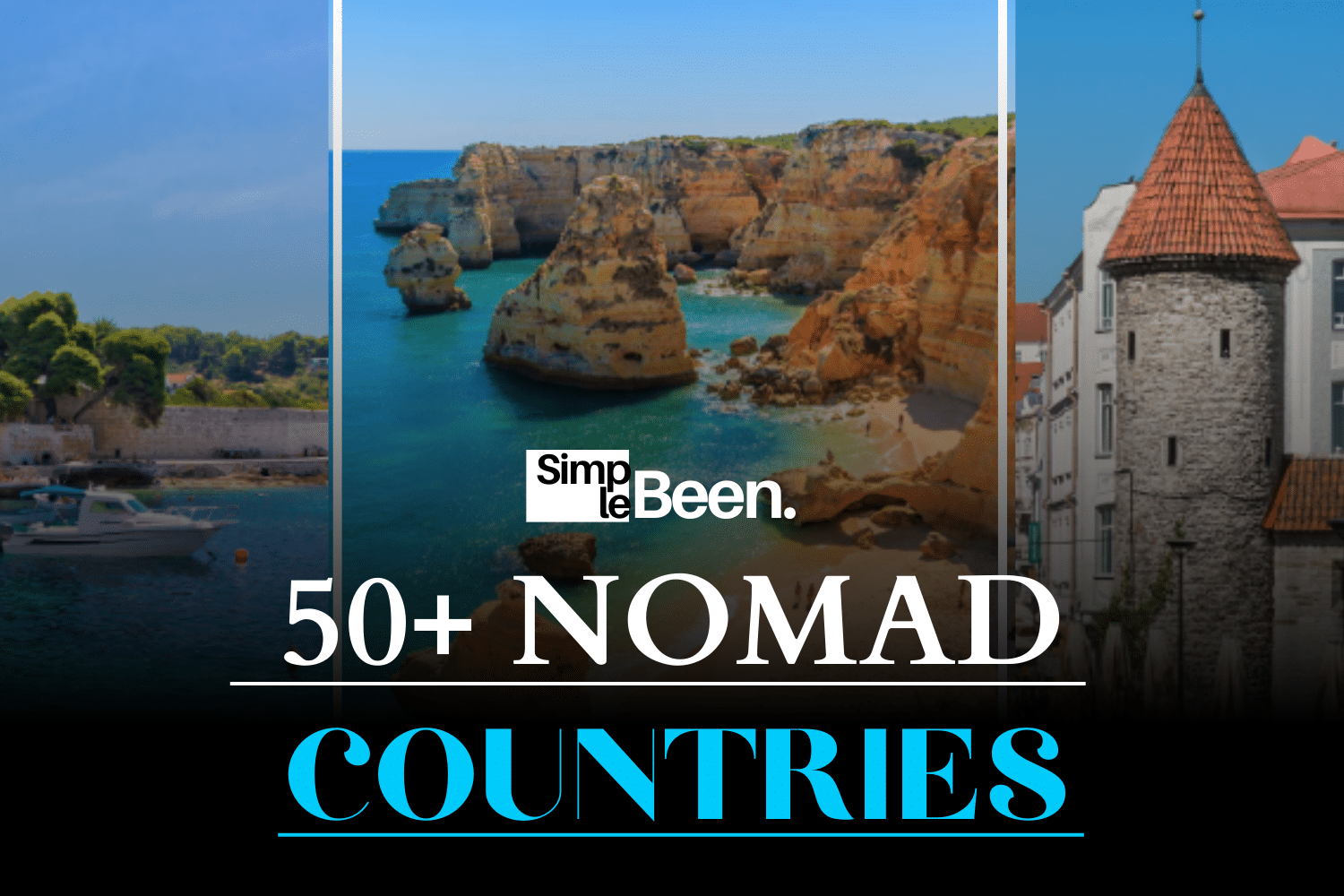









Leave a Comment